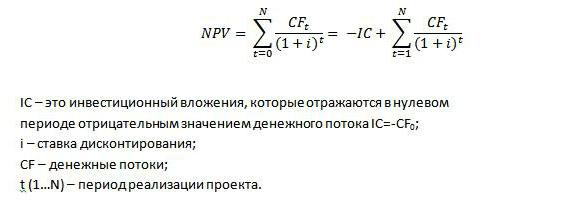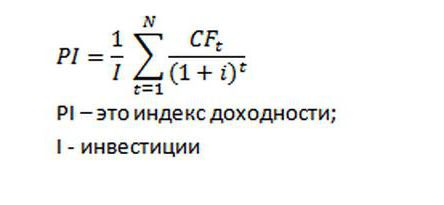Now even a schoolchild understands that the money that a person has at the moment and for which he can now purchase a specific product for a year will have a completely different value, usually less. In this regard, to evaluate large-scale projects with considerable financial costs in foreign practice, an indicator was proposed, called the discounted net income. Thanks to it, it is possible to see in the current period the value of the income that will be received after a certain period of time.
Valuation of financial assets
From the basic economic theory it is known that the price of a product is equal to the sum of the funds invested in its production, such as labor, raw materials, materials and profit. Financial assets are worth as much as they can bring profit to their owner in the future.
For example, it is impossible to measure the material benefits of acquiring a sofa, so its price corresponds to the cost of resources invested in its production. If it was possible to calculate in monetary terms the cost of sitting and lying on upholstered furniture, then it would be possible to calculate the price of this sofa in the future.

The situation is different with assets. For example, the cost of a plant is determined not only by the costs of its construction, but depends on what benefits will be produced in the future by bonds, shares and credit funds invested in it. And to bring this benefit to the present moment of time helps discounted net income.
The essence of discounting
Time is not only an age factor of aging, but also a critical moment in calculating the expected cash flows from any project. This is because the money received for the current period is preferable to future ones. This is due to the fact that the available amount reduces its purchasing power with inflation and there is always the risk of not receiving the invested funds.

Discounting helps the investor determine the price of the present value of future cash flows. The coefficient involved in bringing the future amount of money to a size comparable to current prices is: 1 / (1 + pc)periodwhere pc is the interest rate.
The indicated discount rate is compensation for the money invested in the project and it consists of the share of the risk-free asset covering inflation and the risk charge.
Present and future value of money
Payment net present value (NPV) based on the concepts of future and current value of cash. In international practice, the initial amount of funds is designated PV, and the return - FV. For example, a certain amount (230 thousand rubles) is invested for 2 years at 15% per annum. In this case, it will be received: 230,000 (1 + 0.15)2= 304,175 rubles. This is an option for calculating the future amount.
The reverse operation of calculating the present value of cash, with a known amount of future revenue, is called discounting.

PV (present value) = FV / (1 + sd)period where cd is the discount rate. Visual situation: in 2 years, income is expected in the amount of 304 175 rubles. It is also known that the discount rate is 15% per annum. What will be the discounted (current) cost of funds?
PV = 304 175 / (1 + 0.15)2= 230,000 rubles. It turns out that in the two cases of interest accrual and discounting, the result of the present and future value of money coincides.
NPV
If the calculation for discounting cash flows what is the net present value of the investment project? To begin with, several definitions should be recalled. Cash flow (or from the English "cash flow") in financial analysis refers to not only the receipt of funds, but also their spending. A positive indicator characterizes the inflows of finance, a negative indicator - the costs of the economic entity. The common designation for cash flow CF.
Net present value is defined as the difference between cash flows of future periods presented at the current time and investment costs. The literal translation from English of this indicator is the net present value. The calculation of NPV is necessary for investors and lenders to make long-term investments in fixed-income instruments.
The calculation of net present value is carried out according to the following formula:

Practical use
The method for determining the present value of long-term investments for profit is based on the calculation of the NPV parameter. It can be negative, positive and equal to zero. You do not need to be a great analyst to understand the fact that with a positive value of this indicator for the project, future revenues are estimated in the current financial market by a value exceeding the amount of invested funds.

If the present value is negative, then such projects do not find their realization, and investors or creditors continue to search for profitable investments of their funds.
If the net present value = 0, then the investor evaluates the situation differently. In this case, the investor will not make a profit and will not remain in loss. It will go to zero, that is, it will cover its costs invested in this project. However, if the aim is not to receive financial compensation, but the idea is social in nature, then a decision is made on its implementation, possibly with further profit.
Profitability index
To evaluate effectiveness capital investment In parallel with the present value of cash flows, a profitability index can be calculated. This indicator in different sources can also be called the index of profitability.

A project is considered effective when the profitability index is higher than 1. But why should it be calculated if the NPV is known? Indeed, with a positive value of the net present value profitability index will be more than 1. The answer is simple: its value is necessary for comparing projects with the same positive NPV. Moreover, the higher the РІ value, the greater the margin of safety is diagnosed for a particular project.
Net present value index
This indicator is very close in nature to the profitability index. It is determined by the ratio of NPV to investment. And it shows the share of future income, brought to the present moment of time, relative to the spent funds.
The difference in profitability indices and NPV will be considered as an example. There is a project, it is known that the discount rate is 8%, the implementation period is 3 years. Initial investment of 10,000 p. It is necessary for the investor to calculate the indicated indices.
| Period | Cash flows, RUB | Discount value, rub |
| 0 | -10 000 | |
| 1 | 2 000 | 1 851,85 RUB |
| 2 | -1 000 | - 857.34 rub. |
| 3 | 15 000 | 11 907,48 RUB |
| Total | 12 902,00 r. | |
| NPV | 12902-10000 = 2 902 rub. | |
| Profitability index | 12902/10000=1,29 | |
| NPV Index | 2902/10000=0,29 | |
The table shows that the return on investment after three years will reach 29%. The only difference is that the profitability index takes into account the amount of investment, so its indicator is more than 1.
The dependence of NPV on various factors
When evaluating two or more projects, the profitable one is the one with the maximum discounted net income with the same investment. For example, at a discount rate of 10%, project No. 1 has a NPV = 78 thousand rubles, and the same indicator for project No. 2 is 48.2 thousand rubles. According to the rule of reduced income, priority is given to the first option.That is, the indicator depends on the scheme and the amount of net cash flow; discount rates.

As already mentioned, net present value is defined as the sum of the private cash flows to the discount rate plus one in the degree corresponding to the year of these receipts, net of investments. This indicator is sensitive to a high discount rate. Moreover, if in the first years of the project implementation significant cash flows are observed, then a high rate on the final result (NPV) does not affect. For example, when considering two projects with the same rate, the implementation period and one investment amount, but with a different cash flow pattern, the investment program that will receive significant financial flows in the first years will be more profitable.
NPV with unequal duration of operation
In practice, there are often cases where the net present value of a project is calculated under unequal conditions. In which case is the investment program being decided?
There are two ideas (A, B) for investing. The implementation period for the first is 4 years, the second for two. NPV (A) = 45, and the second project 41. It would seem that everything is clear, preference should be given to idea A. However, if with the same income, investments and the cost of capital (rate), re-invest finances in project B (until the end of the project A), then the NPV of the second idea will increase.
To solve such problems, the extended-term method is used for financial analysis. It is necessary to determine the smallest multiple number of terms of the projects under consideration, calculate the NPV and choose a program according to its largest value.
Advantages and disadvantages
Although the net present value shows the result of investments, comparable with the current market value of the currency, cash flows are forecast values. Therefore, giving preference to the business idea for the maximum NPV indicator, you will not receive a guarantee that the outcome of the events during the project will be as expected by financial analysts.
But one cannot leave unnoticed the advantage of determining future income here and now. That is, accounting for financial resources over time is an indisputable advantage of the indicator in question. In addition, the value of NPV is also in that it takes into account the risks that are expressed by the discount rate. But this advantage also turns into a disadvantage, due to the inability to accurately determine the risks and the level of inflation.
Task
The implementation of two measures involves expenses: 3 million rubles initially and 1 million rubles for three years. Expected annual revenues: 2.5 million; 3.5 million; 1.5 million for one event and 3 million each year for the second. The cost of capital is 10%. The question is: "Calculate your net present value."
NPV1= -3 / (1 + 0.1) 0 + (2.5 - 1) / (1 + 0.1) 1 + (3.5 - 1) / (1 + 0.1) 2 + (1, 5 - 1) / (1 + 0.1) 3 = -3 + 1.36 + 2.07 + 0.38 = 0.81 million rubles.
NPV2= -3 / (1 + 0.1) 0 + (3-1) / (1 + 0.1) 1 + (3 - 1) / (1 + 0.1) 2 + (3 - 1) / ( 1 + 0.1) 3 = -3 + 1.82 + 1.65 + 1.5 = 1.97 million rubles.
Simplest example investment analysis project. It is more profitable to invest in the second event.
Summary
Despite the existing shortcomings, the discounted net income is still used as a criterion for making an investment decision. And in order for investments in a specific project to justify itself and confirm the high rates of reduced returns, reliable initial information is needed. That is, the production, marketing and financial plan should reflect data as close as possible to future reality.

For example, the overestimation of expected demand, which, when analyzing the situation, pulled a positive outcome for the NPV indicator, may result in losses for all its participants during the implementation of the project approved by investors.
In parallel, a profitability index should be calculated, which can affect the decision of lenders / investors in favor of the event with the lowest discounted income, but with the greatest safety margin.
The ownership methodology of the indicator considered in this article is an integral part of investment analysis.








